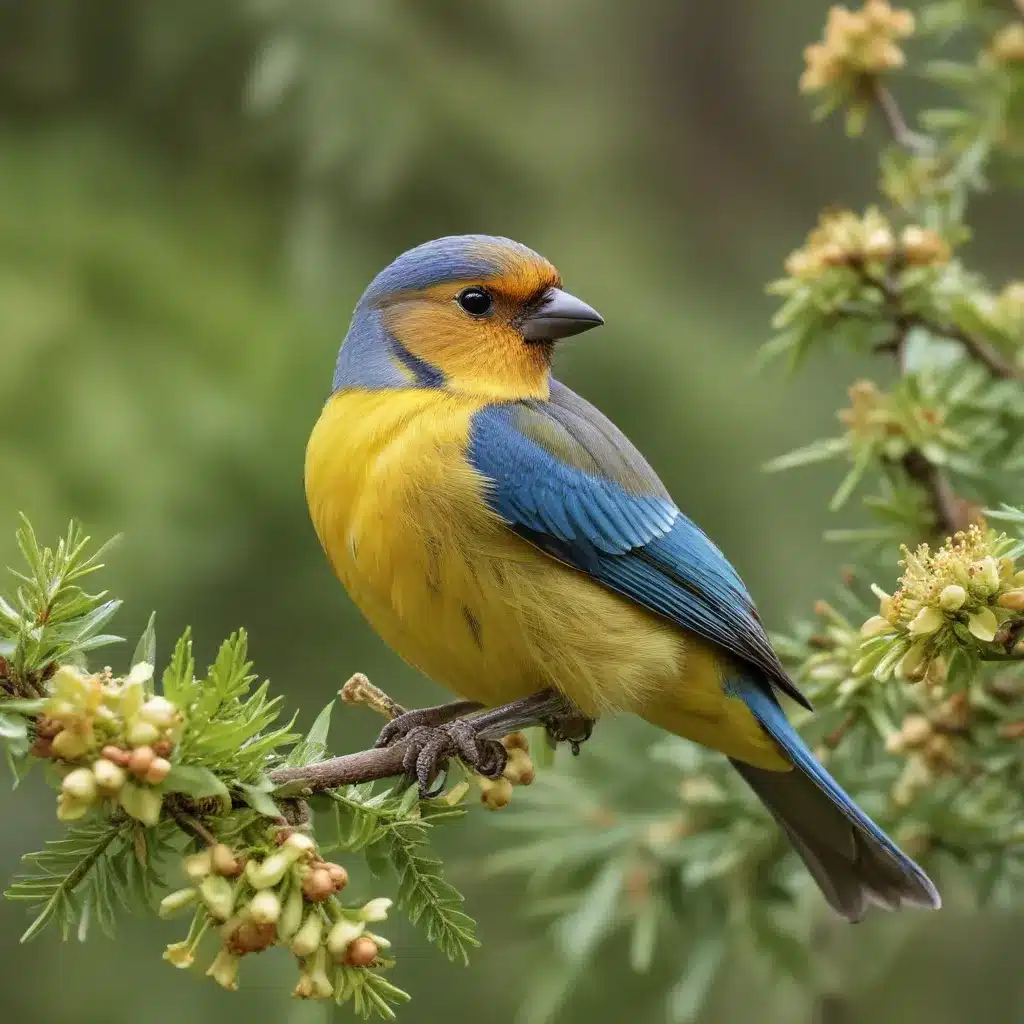
Avian Aromatherapy: Using Scents to Enhance Your Bird’s Wellbeing
As an experienced avian caretaker, I’ve seen firsthand the profound impact that scents can have on a bird’s overall wellbeing. From promoting physical health to supporting positive behaviors and emotional states, the strategic use of aromatic compounds can be a powerful tool in enhancing the quality of life for our feathered companions.
Avian Wellbeing
The holistic wellbeing of our avian friends encompasses three key areas: physical health, behavioral health, and emotional health. Integrating avian aromatherapy can address each of these aspects, creating a more nurturing and enriched environment for our birds.
Avian Physical Health
Many essential oils and natural scents possess antimicrobial, anti-inflammatory, and analgesic properties that can support a bird’s physical well-being. For instance, studies have shown that diffusing Melaleuca alternifolia (tea tree oil) can help reduce the risk of respiratory infections, while Lavandula angustifolia (lavender) oil can aid in wound healing and pain management. By strategically incorporating these and other beneficial scents, we can create a healthier, more resilient environment for our feathered friends.
Avian Behavioral Health
Scents can also have a profound impact on a bird’s behavioral patterns and overall mental well-being. Certain aromatic compounds, such as Citrus aurantium (neroli) or Vetiveria zizanioides (vetiver), have been observed to promote calmness, reduce stress and anxiety, and even encourage positive social interactions. Integrating these scents into a bird’s habitat can help foster a more harmonious and enriched living space.
Avian Emotional Health
Just as scents can influence our own moods and emotions, they can also play a crucial role in supporting the emotional health of our avian companions. Uplifting aromas like Citrus sinensis (sweet orange) or Pogostemon cablin (patchouli) have been known to elicit feelings of joy and contentment, while grounding scents like Boswellia serrata (frankincense) can help alleviate feelings of fear or distress. By creating a sensory-rich environment, we can nurture our birds’ emotional well-being and promote a positive, enriched quality of life.
Aromatic Compounds
When it comes to avian aromatherapy, it’s essential to understand the distinction between natural scents and synthetic fragrances, as well as the various methods of scent delivery.
Natural Scents
Natural aromatic compounds, such as essential oils, hydrosols, and plant-based extracts, are derived directly from the plant source. These compounds often possess a wide range of therapeutic properties and can be safely used around birds when properly diluted and applied. It’s crucial to source high-quality, pure, and unadulterated natural scents to ensure the safety and efficacy of your avian aromatherapy regimen.
Synthetic Fragrances
In contrast, synthetic fragrances are created in a laboratory and may contain a complex blend of chemicals, some of which can be potentially harmful to birds. These artificial scents often lack the nuanced complexity and therapeutic benefits of their natural counterparts and should be avoided when creating a scent-enriched environment for your avian companions.
Scent Delivery Methods
There are several effective methods for introducing aromatic compounds into a bird’s habitat, each with its own advantages. Diffusion, either through the use of an essential oil diffuser or simple misting techniques, allows for the gentle and consistent dispersal of scents throughout the environment. Topical application, such as lightly misting a bird’s favorite perch or nesting area, can also be a useful approach. However, it’s crucial to exercise caution and ensure that any direct contact with the bird is minimal and safe.
Avian Olfaction
To fully harness the power of avian aromatherapy, it’s important to understand the unique aspects of a bird’s olfactory system and how they perceive scents.
Avian Olfactory Anatomy
Birds possess a well-developed olfactory system, with a significant portion of their brain dedicated to processing and interpreting scent information. Unlike humans, who rely primarily on visual and auditory cues, birds often use their sense of smell as a primary means of navigating their environment and interpreting their surroundings.
Avian Olfactory Perception
Avian olfactory perception is often more acute and nuanced than our own, allowing birds to detect and respond to a wide range of aromatic compounds. They can perceive subtle changes in scent, which can influence their behaviors, emotions, and physiological responses.
Avian Olfactory Responses
When exposed to specific scents, birds may exhibit a variety of reactions, ranging from increased activity and exploration to calming and soothing behaviors. Understanding these olfactory-based responses can help us tailor our avian aromatherapy approach to meet the individual needs of our feathered companions.
Scent-Enriched Environments
Creating a scent-enriched environment for your bird involves a multifaceted approach that considers habitat modification, scent diffusion techniques, and ongoing environmental monitoring.
Habitat Modification
Integrating aromatic plants, such as Mentha spicata (spearmint) or Rosmarinus officinalis (rosemary), into your bird’s habitat can provide a natural and continuous source of beneficial scents. Additionally, strategically placing scented perches or nesting materials can further enhance the sensory experience for your feathered friend.
Scent Diffusion Techniques
Utilizing essential oil diffusers or simple misting methods can allow for the controlled and consistent dispersal of aromatic compounds throughout your bird’s living space. When selecting essential oils for diffusion, it’s crucial to research their safety profiles and dilute them appropriately to ensure the well-being of your avian companion.
Environmental Monitoring
Closely observing your bird’s responses to different scents and making adjustments as needed is key to creating an optimal scent-enriched environment. Monitoring your bird’s behavior, activity levels, and overall demeanor can help you identify the most beneficial aromatic compounds and tailor your avian aromatherapy approach accordingly.
By incorporating the principles of avian aromatherapy into your bird’s care routine, you can unlock a world of possibilities for enhancing their overall wellbeing. From promoting physical health to supporting positive behaviors and emotional states, the strategic use of scents can truly transform the quality of life for our feathered friends.
For more information on avian care and enrichment, be sure to visit Mika Birds Farm, where you’ll find a wealth of resources and expert advice to help you create the best possible environment for your avian companion.


